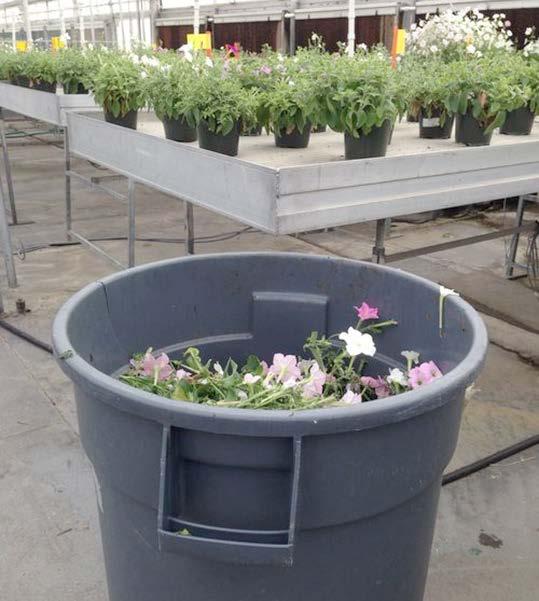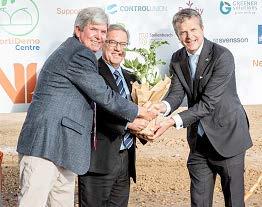
3 minute read
Can nutrient solutions be recycled?
Tanks for fertilizer mixes at a large greenhouse facility.

Advertisement
PROF NJJ COMBRINK AUTHOR
Water and nutrients can be saved when nutrient solutions are recycled in hydroponic plant production units. However, this was not the only reason why the Dutch spent millions on research to be able to recycle. They started to recycle when strict laws were enforced in the year 2000, prohibiting the release of nutrient-rich water from production units into drainage systems or rivers. The Dutch researchers solved their problems as described in the following two paragraphs:
1) Sodium (Na+) and chloride (Cl) accumulation
Feeding water with very low Na and Cl levels is needed in order to recycle nutrient solutions without the danger that these ions may accumulate to toxic levels. These levels should be lower than the levels that can be absorbed by the specific plant in production. A saline tolerant crop such as tomatoes can remove 16 ppm Na and 32 ppm Cl. Thus, tomatoes can be recycled with feeding water containing these, or lower, Na and Cl levels. levels be used for a limited recycling period (until the red lights start flashing) saline sensitive crops can locally be flushed as soon as root zone levels reach 69 ppm Na or 107 ppm Cl. Most greenhouse crops will be unaffected with Na levels below 115 and Cl below 178 ppm.
Saline tolerant crops such as tomatoes will be able to withstand levels of up to 184 and 284 ppm Na and Cl respectively. Should these levels be exceeded, yield and quality losses will occur.
Special care is needed for low EC crops. As an example, roses only absorb 5 ppm Na and 11 ppm Cl. These are the highest levels that may be present in the feeding water to grow roses in a 100% recycled (closed) system.
accumulation of these ions occur in closed systems that may not be released with the nutrient-rich water (flushing is a crime in the Netherlands), they are forced to lower the Na and Cl levels by adding rain water to their feeding water.
This is one of the reasons why the roofs of all Dutch greenhouses are used to catch rain water, to be stored in plasticlined reservoirs. They lower the Na and Cl levels in their feeding water by diluting it with rainwater.
2) Sterilization options for closed (recycled) systems
The following organisms should not be present in nutrient solutions:
Nematodes Special filters can be used to eliminate harmful nematodes.
Fungi are much smaller than nematodes, ranging from 3 to 50 μm. A slow sand filtration system may control fungi but with clear drainage water, ultra violet (UV) radiation is more effective.
Bacteria are small, difficult to control and usually in the order of 1 μm. Apart from entering a greenhouse via the feeding water, these pathogens may also be carried on the shoes of visitors, pruning knives, seed or seedlings.
Viruses are extremely small (0.03-0.3 μm), usually insect transmitted and only visible with an electron microscope. Some viruses are effectively transmitted with recycled water.
Once in the recycled nutrient solution, bacteria and viruses can infect (wipe out) all the plants in the production unit. UV sterilization is commonly used in Europe where drained solutions are clear, due to the use of inert rockwool growth slabs.
The concentration of phytopathogens in some rivers and dams has increased in certain areas over the past few years, forcing growers to sterilize feeding water drawn from rivers. These growers use chlorination, as used by most South African municipalities. The drain-to-waste system is mostly used in South Africa, limiting the spread of water-borne diseases between plants in a production unit. The drained solution should not be allowed to pollute rivers, but rather be used to fertigate field crops.
Recycled nutrient solutions should be chemically monitored and managed.
As a crop develops, or climatic changes occur, nutritional needs change. Mineral malnutrition can not effectively be corrected by using leaf analyses or petiole sap measurements. The best procedure is to analyze the drained nutrient solution and to identify nutritional imbalances, even before it is reflected in the leaves. By doing this, yield losses can be prevented.
This procedure is described in the book: ‘Nutrient solutions and Greenhouse management’ only available from the
Combrink family trust:
E-mail: njjc@sun.ac.za









